A Step Into the Ether, pt. 3: Scaling-Up and Cost-Cutting in Design
By starshipcapn
Welcome to part 3 of my series, in this issue I will be covering how I used a design I found on Reddit to scale up my operation and cut the costs of building a frame down significantly. This is a design that I would recommend to anyone planning on building more than one mining rig, as you will pay one price, and have plenty of space to expand your operation.
As mentioned in my most recent article, I made the decision to switch from my aluminum-frame mining rigs, to a method that I predicted to be much more cost effective. I had seen a Redditor post a picture of his graphics cards hung from wire-frame shelves, along with their components resting on the shelf directly below it. I cannot and will not take credit for the creation of this design, as I did not come up with it. Unfortunately, I bookmarked the Reddit page where I found the design on a laptop that no longer belongs to me. So, cheers to you friend, whoever you are, your design has served me flawlessly so far. I hope you find your way to Steemit someday, so I can thank you personally.
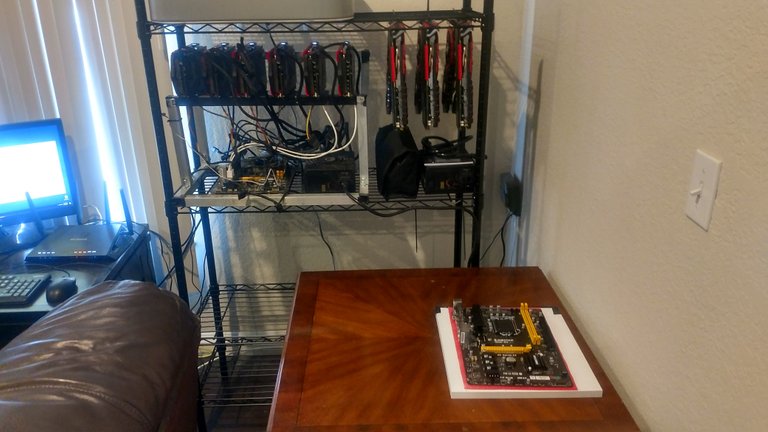
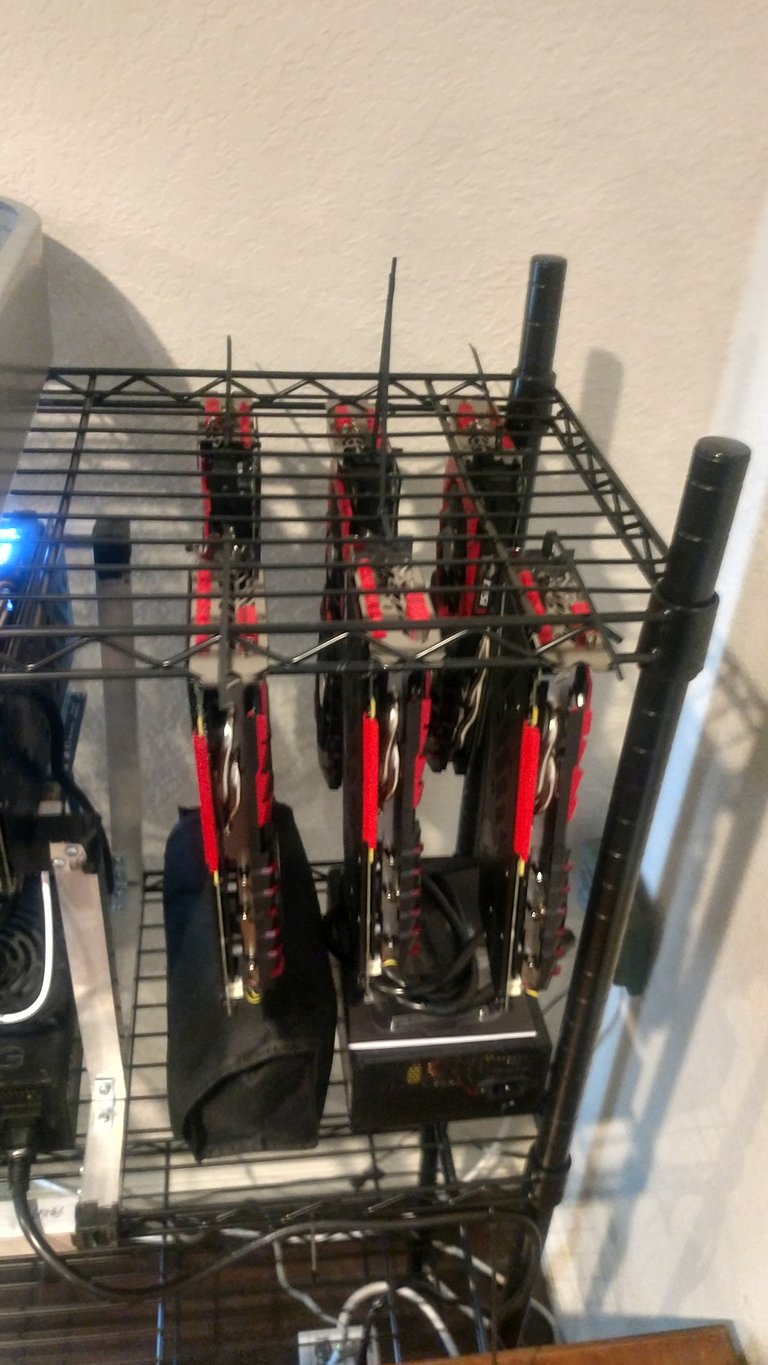
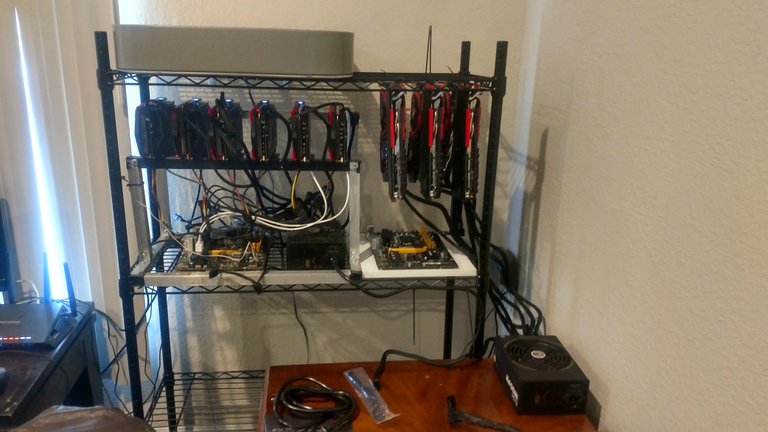
The basic idea of the original design is true to the original, with the added benefit, of my previous design sitting comfortably on the shelf alongside its new companion. This design can also be scaled up with relative ease, and allows for flexibility in maximizing your thermodynamic efficiency. Depending on your unique circumstances, you should carefully optimize your setup for airflow. For example, I had the benefit of mining in a room with a high ceiling, this allowed me to simplify airflow by placing box fans above and/or below it. This created a solid column of moving air, in a chimney-like application.
I would expect to spend around $30-40 on the wire frame. This will reduce the mobility of your individual mining rigs, but it will be secure (Be careful when installing the zip ties. Have a friend help you hold them from the start, because I thought to do so after I had already dropped mine onto the shelf below). However, you will save on the upfront cost to buy power tools, if you don't already have them. Using this design can also save you a lot of time, as the process of building the frame can take a few hours (more if you're doing it without help). It can also save you the terror of having angle grinders explode a foot away from your face, and yes, its a frightening experience the first time it happens, cause you won't see it coming.
Hybrid Cooling
The example used below is a rig that I built for my roommate after he decided to invest in a mining rig of his own (mining is contagious). Another added benefit of this setup is that you can make use of liquid-cooling (hybrid-cooling in this case) methods. The shelf that supports your GPUs can also serve as a resting place for their corresponding radiators.
[I should also note that if you have the option to go with hybrid cooling, do so, because the extra cost is well worth the savings of time and maintenance, they will run cooler, and worry you less often.]
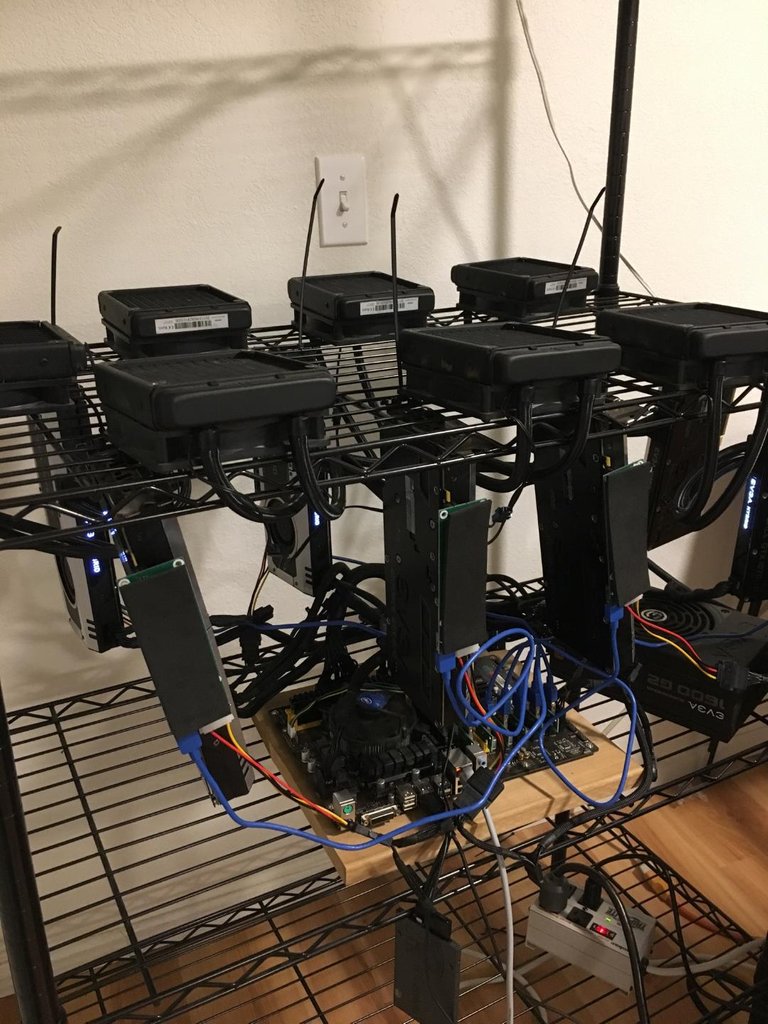
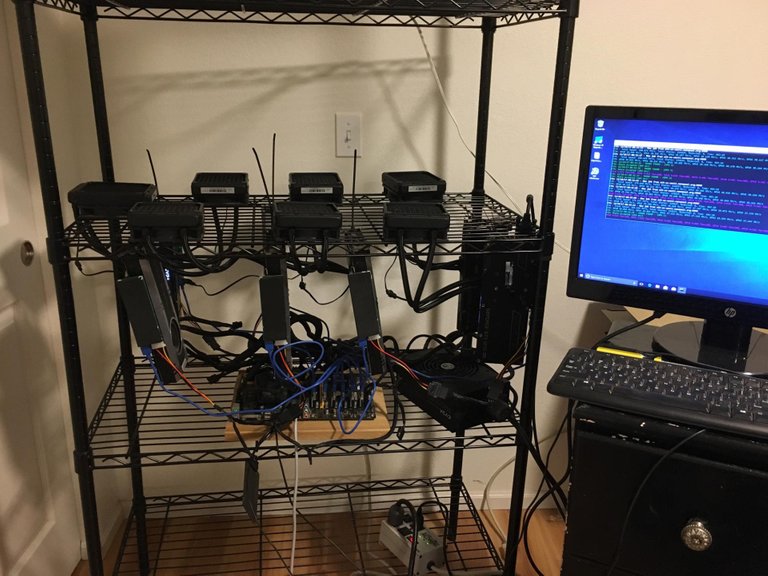

cool stuff. sorry my upvote isnt worth what it was a few days ago, my 1 month SP rental ran out, haha.
i'd love to hear more about cooling, liquid cooling, and details about how you handle heat. that, along with electricity costs and access, seems to me to be the biggest and most difficult issue when scaling up from one rig to multiple rigs.
Thanks again! A lot of cooling optimization is affected by your physical location. Summer was rough, it's a lot more expensive to maintain your hashrate with warmer ambient temperatures.
I chose to operate in NC rather than CA because of weather and electricity prices. (I also got a sweet deal on commercial space)
Electricity access can be a major issue, for my setup I had to purchase my own dedicated transformer for a 120 sq-ft. space (not cheap)! But when you customize your space, you get options like integrally surge-protected outlets for the whole setup.
Excellent placement idea!
I see you are mining ethereum. What video cards are you using?
The GPUs used for the first two builds (pt.1&2) were all MSI RX480s (~20-21MH/s), I believe the ones hanging here are MSI RX 580s, and the hybrid build was using GTX 1070s.
My commercial operation primarily uses ZOTAC 1070 AMP! Editions.
In my experience, the RX 480s seem to outperform the 580s, but the 1070s are the best middle ground in terms of $ per Megahash.